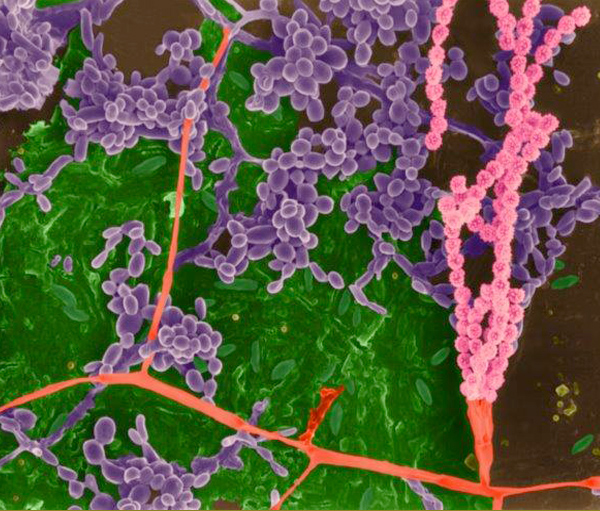
© Dennis Kunkel Microscopy
Cyclosporiasis is a diarrheal disease that is caused by a protozoan that was discovered in the late 1990's as a result of several foodborne outbreaks attributed to the consumption of raw produce including raspberries, basil and lettuce.
What diseases are caused by Cyclospora?
The Cyclospora cayetanensis organism in responsible for watery diarrhea, nausea, abdominal cramping, anorexia and weight loss. It is interesting to note that since this disease is the result of a parasite, patients may not always exhibit signs of fever. In most people, the diarrhea is self limiting and can last for between 9-43 days. For those patients that are immunocompromised, diarrhea may last for months if not treated.
Who is more susceptible to infection from Cyclospora?
As with many parasitic diseases, all people are susceptible to the infection, but those that are immunocompromised stand the most risk.
Epidemiology of Cyclospora
The parasite responsible for Cyclospora is primarily waterborne and people are infected through drinking or swimming in contaminated water. Most notable are the international outbreaks that were attributed to the consumption of raspberries from Guatemala in the late 1990's. Outbreaks usually occur during the warmer months.
Incubation Period
The median incubation period is approximately 1 week.
Diagnosis
The diagnosis of Cyclospora is made by the identification of oocysts in the stool. A stain is applied to the stool sample and the organisms fluoresce under ultraviolet light.
Treatment
Cyclosporiasis can be treated with a week long course of oral trimethoprim (TMP)-sulfamethoxazole (SMX). Doses required will vary for children and adults. Unfortunately, for those patients that are sensitive to sulfa drugs, a treatment regiment has not yet been identified.
Contact EHA Consulting Group today for more information about how we can assist your company.
We offer services for
- Retail Food Safety
- Restaurant Food Safety
- Manufacturers
- Food Trucks
- Drugs & Cosmetics
- Melons & Cantaloupes
- Produce
- Warehouses
- Food Packaging & Packaging Materials